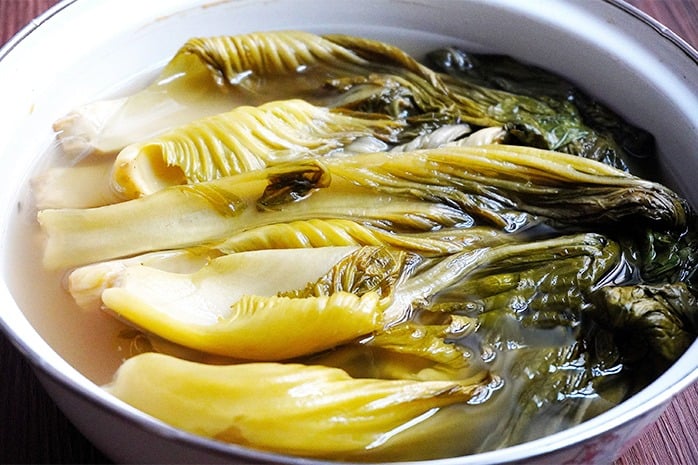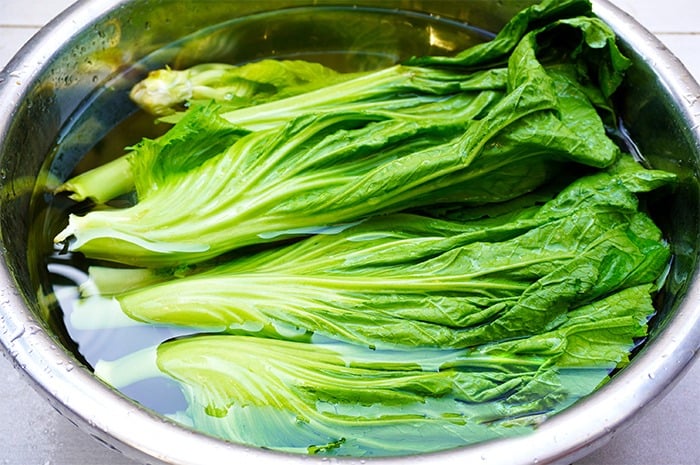Fermented radish is a popular side dish in Vietnamese cuisine, known for its ability to stimulate the palate and reduce the greasy feeling when indulging in fatty foods. It is also an ideal ingredient for cooking soup with fish or beef, balancing the flavors with its subtle sourness.
The secret to fermenting crisp radish
Don’t skip this important step when fermenting radish to avoid spoilage. Many people make this dish but don’t understand the secret to achieving delicious, crispy, and fresh-tasting radish, often resulting in unsatisfactory outcomes without realizing the cause.
To ensure successful fermentation and maintain freshness, it is crucial to boil the brine used for fermenting. Never use water that hasn’t been boiled, as it may contain bacteria that can cause the radish to spoil and develop an off flavor. Unfortunately, many people tend to overlook this critical step and use tap water instead.

Don’t skip this crucial step to prevent radish from spoilage.
Note that the boiled brine must be completely cooled before using it for fermentation. Avoid using boiled water that has been left sitting for a few days, as it may have become contaminated again.
The proper way to ferment radish
Wash the radish thoroughly: First, rinse the radish thoroughly under running water to remove any dirt or insect eggs that may be lurking in the crevices of the leaves.
Wilt the radish: After washing, let the radish air dry and then place it in a cool, ventilated area to wilt. This step is essential for achieving crispy, easily fermented radish that is resistant to spoilage. You can cut the radish into bite-sized pieces or leave it whole, depending on your preference.
Prepare the brine: Boil the water and let it cool until it is just warm (the ratio is 1 liter of water for every kilogram of radish). Then, mix in 60 grams of salt and 20 grams of white sugar, stirring until dissolved. Remember, boiling the brine helps eliminate bacteria and prevents spoilage or the formation of a slimy film.
Arrange the radish in a crock: Place the radish in a pre-sterilized crock, with the stems facing downward and the leaves upward, to ensure even fermentation. Pour the prepared brine over the radish, and to enhance the flavor, you can add a few peeled shallots and chilies. A splash of vinegar can also help speed up the fermentation process and improve the taste.

Firstly, thoroughly rinse the radish under running water to remove any dirt or insect eggs.
Weight the radish: Use a large plate to cover the surface of the crock, making sure the radish is completely submerged in the brine.
After three days of fermentation, the radish leaves will turn yellow and develop a sour taste. At this point, you can either consume them directly or use them in soups or stir-fries. The final product will have an appealing yellow color, a crispy texture, and a long shelf life without the worry of spoilage.
Notes for fermenting crisp radishTo ensure your fermented radish stays crispy and fresh, keep the following in mind:
Remove damaged leaves: Before soaking, get rid of any wilted or damaged leaves, as they can cause the radish to spoil faster and affect the flavor.
Clean utensils: Make sure the utensils used for fermenting are clean and free from oil residue. Otherwise, the radish may spoil.
Keep the radish submerged: Ensure the radish is completely covered by the brine. You can use a plate or a rack to weigh it down and place a heavy object on top to keep the radish submerged. This prevents contact with air and inhibits spoilage.
Add spices: Feel free to add some peppercorns or extra chilies to enhance the flavor of your fermented radish.

































